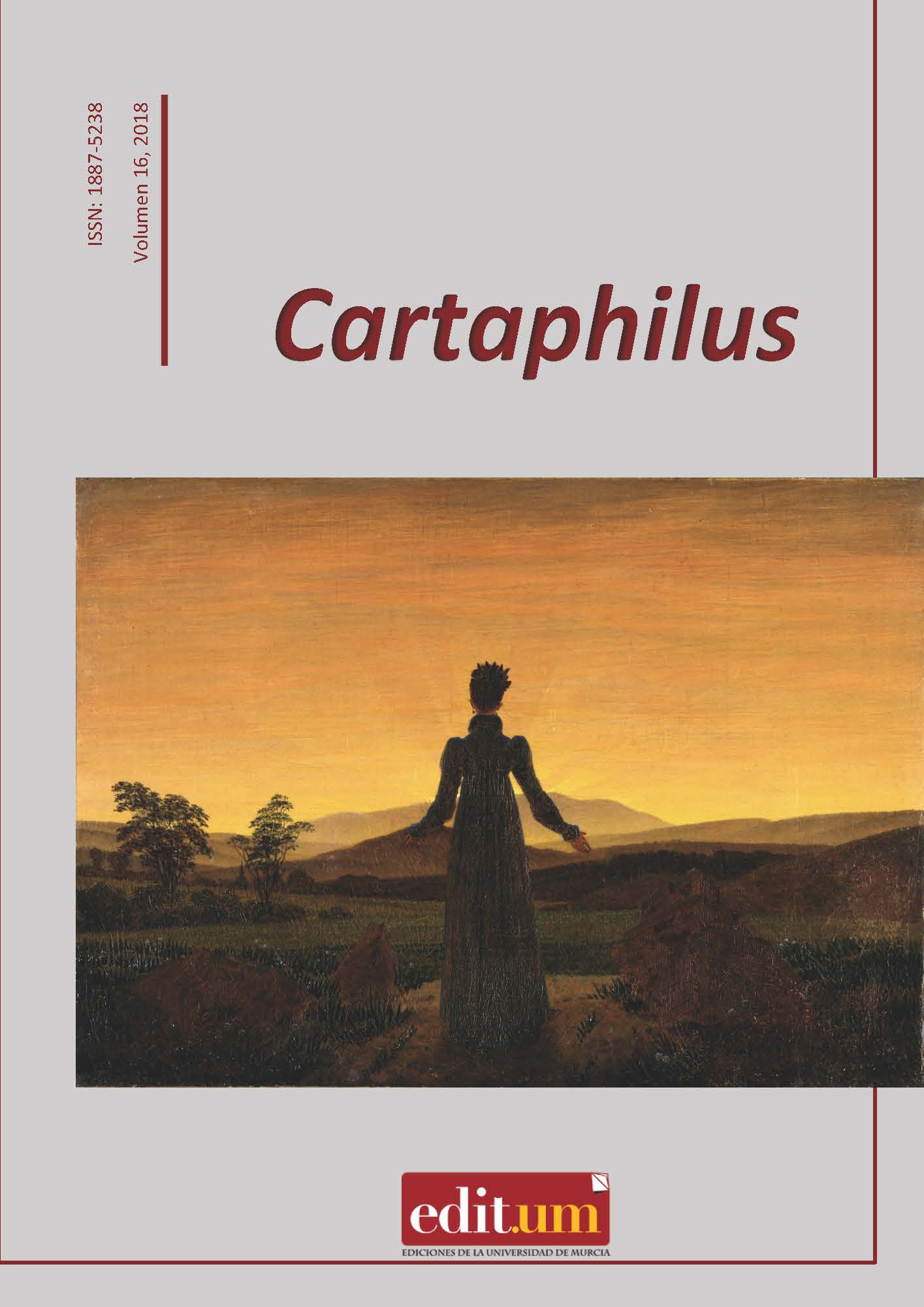Wood and Code: Ideology, Early Modern Puppets and Contemporary Avatars
Abstract
Abstract:
This article studies the capacity of Early Modern puppets and videogame avatars, two seemingly unrelated objects of research, to produce and reproduce gender discourses. Despite being made very differently, their wooden and coded natures both participate in of acts of aligning with and resisting against existing ideologies. This is because puppets and avatars’ relation to ideology does not depend exclusively on the stories they contribute to tell; the materiality of both cultural texts as well as the puppeteers and videogame players themselves all contribute to the reenacting and contesting of gender discourses.
Resumen:
Este artículo explora la capacidad de producción y reproducción de discursos de género de dos elementos en principio muy dispares pero que este texto acerca como próximos y similares: las marionetas de madera del teatro renancentista inglés y los avatares en videojuegos contemporáneos. Pese a su materialidad y composición distinta, madera y código, marionetas y avatares poseen una capacidad inusual para servir de foco de diversas reproducciones y resistencias a discursos de identidad que dependen no sólo de la escritura de los personajes representados, sino también de los agentes detrás de dichas representaciones o de la materialidad que los sostiene.
Downloads
-
Abstract315
-
pdf210
References
BELMONTE, J.F. (2013): “Identity through free choice? The frontiers of sexuality and gender in computer games”. In Playing with Virtuality, Theories and Methods of Computer Game Studies. Ed. Benjamin Bigl and Sebastian Stoppe. Frankfurt: Peter Lang, 285-298.
BELMONTE, J.F. (2017): “Teenage heroes and evil deviants: sexuality and history inJRPGs”. Continuum, 31:6. 903-911.
BUTLER, J. (1990): Gender Trouble. New York: Routledge.
CHUN, W. (2011): Programmed Visions. Cambridge, Massachusetts: The MIT press.
CSIKSZENTMIHALYI, M. and ROCHBERG-HALTON, E. (1981): The Meaning of Things:Domestic Symbols and the Self. Cambridge: Cambridge UP, 1981.
DANT, T. (2006): “Material Civilization: Things and Society.” The British Journal of Sociology. 57(2). 289-308.
HOFFMANN, E.T.A. (ed. 2016): The Sandman. London: Penguin Books.
JONSON, B. (ed. 2000): Bartholomew Fair. Manchester: Manchester University Press.
MCCRACKEN, G. (1988): Culture and Consumption: New Approaches to the Sym- bolic Character of Consumer Goods and Activities. Bloomington: Indiana UP.
PRECIADO, B. (2013): Testo Junkie. New York: The Feminist Press CUNY.
RIGGINS, S. H. (1994): “Introduction”. The Socialness of Things: Essays on the So- cio- Semiotics of Objects. Ed. Stephen Riggins. Berlin: Mouton de Gruyter, 1-6.
SPEAIGHT, G. (1955): The History of the English Puppet Theatre. London: Harrap.
WOODWARD, I. (2007): Understanding Material Culture. London: SAGE Publica- tions Ltd.
Works published in this journal are subject to the following terms:
1. The Servicio de Publicaciones of the University of Murcia (the publisher) reserves the copyright of the published works and encourages and allows their reuse under the usage licence indicated in point
© Servicio de Publicaciones, Universidad de Murcia, 2015
2. Works are published in the electronic edition of the journal under a Creative Commons Reconocimiento-NoComercial-SinObraDerivada 4.0 International licence (legal text). They may be copied, used, disseminated, transmitted and publicly displayed, on condition that: i) the author and original source of the publication are cited (journal, publisher and URL of the work); ii) the material is not used for commercial purposes; iii) the existence and specifications of this licence for use are mentioned.

3. Self-archiving conditions We allow and encourage authors to electronically disseminate the preprint versions (the pre-review version) and/or post print (the version that has been reviewed and accepted for publication) of their works before they are published as this encourages earlier circulation and dissemination and so a potential increase in their citation and impact in the academic community.




